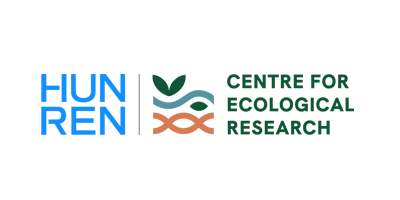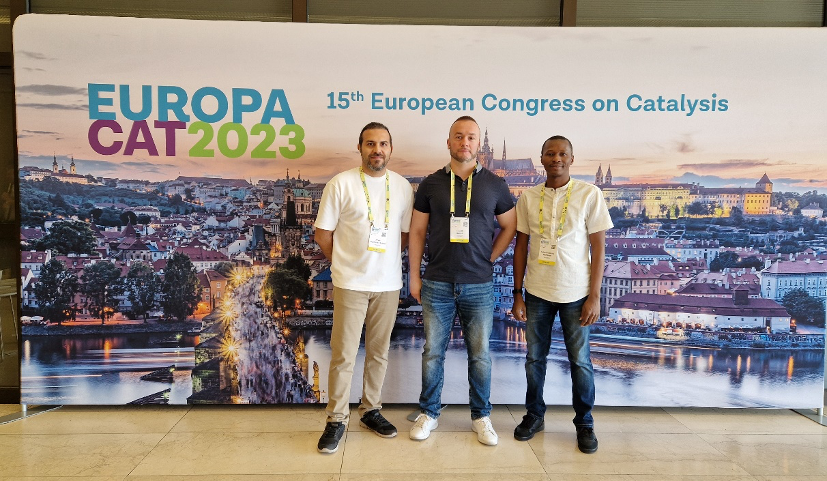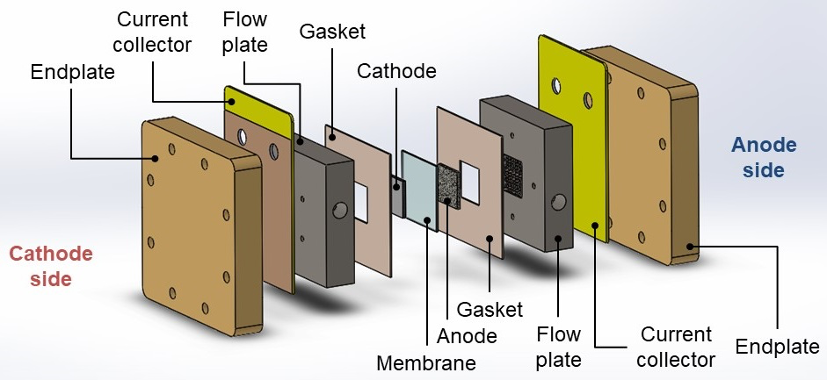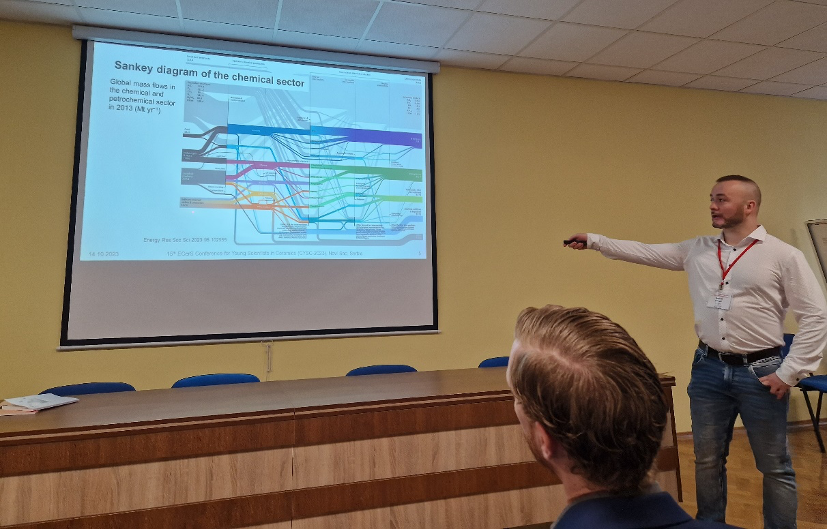Project leader:
Kónya, Zoltán
Participating researchers:
Haspel, Henrik; Ballai, Gergő; Saheed Abiola Raheem; Arvin Taghizadeh Tabrizi; Fülöp, Henrik; Tóth-Kőrösi, Koppány; Szatmári, Luca ÁgnesTurning high CO2 emitting industries „green” is an important part of the efforts on mitigating the long-term effects of anthropogenic climate change. „Green” steel, „green” ammonia and „green” cement will pay major roles in that process, as these industries are among the biggest CO2 emitters on the global scale. A further environmental issue arose from the spread of artificial nitrogen fixation (fertilizers), along whit the increasing anthropogenic nitrate pollution of the environment by the excessive emission of industrial waste waters.
Nitrate ions dissolved in aqueous solutions can, however, be electrochemically transformed into less toxic products, even into an important chemical feedstock, ammonia. The so-called electrochemical nitrate reduction (NO3RR) can serve as a sustainable alternative of the energy and resource intensive Haber-Bosch ammonia synthesis. A further positive outcome of NO3RR would be the drop in the environmental N2O emission, as this substance is responsible for a notable part of the stratospheric ozone depletion having a high Global Warming Potential (GWP) of ≈ 270. Since the main source of N2O is the enzyme catalyzed transformation of nitrate ions in soils (NO3− → N2O and NH3), decreasing nitrate concentration results in the decrease of N2O emission as well.
Ammonia can also be regarded as a carbon-free energy vector. Besides its sustainable synthesis, a closed carbon-free energy cycle (NH3 economy) can be realized by NO3RR. To this end, further developments in ammonia utilization technologies (ammonia fuel cells, ammonia oxidation reactions (AOR) etc.) are required, too. Beyond its environmental impact, NO3RR, like CO2RR, contributes to the progress towards a sustainable energy generation and chemical industry. In addition, since a series of species of different oxidation states formed in nitrate reduction, elemental nitrogen can be produced by fine tuning the selectivity of the catalyst. Although no reactive products of industrial relevance are obtained here, a positive environmental impact is still achieved by consuming nitrate ion pollution.
Electrochemical nitrate reduction experiments are traditionally carried out in beaker-sized three-electrode setups (H-cells). Moving towards industrial relevance (Technology Readiness Level, TRL), reactions need to take place in continuous flow electrolyzers. Such progress has been witnessed in a wide variety of electrocatalytic reactions in the past, like those utilized in fuel cells, water and CO2-electrolyzers. Results on flow cell NO3RR is still scarce today, but we anticipate a huge increase in the number publications with the active involvement of the University of Szeged in the coming years.
Further information:
HUN-REN-SZTE Reaction Kinetics and Surface Chemistry Research Group
University of Szeged, Applied and Environmental Chemistry
Publications
Results
Decarbonizing the Chemical Industry: Ceramics in the Ammonia Economy
Henrik Haspel,
oral presentation
15th ECerS Conference for Young Scientists in Ceramics (CYSC 2023)
Novi Sad, Serbia, 11-14. October 2023
In-situ Investigation of the MOF-Derived Catalyst Formation Mechanism
Henrik Haspel, Gergő Ballai, Tamás Győző Pocsai, Luca Ágnes Szatmári, Ákos Szamosvölgyi, Dorina Gabriella Dobó, Ákos Kukovecz, Zoltán Kónya,
poster presentation,
15th European Congress on Catalysis (EuropaCat2023),
Prague, 27. August – 1. September 2023
Oxygen-deficient W-CoOOH nanostructures for improved electrochemical nitrate reduction to ammonia
Saheed Abiola Raheem, Gergő Ballai, Imre Szenti, Henrik Haspel, Zoltán Kónya,
poster presentation,
15th European Congress on Catalysis (EuropaCat2023),
Prague, 27. August – 1. September 2023
Copper/Boron Carbon Nitride Core/Shell Structure for Electrochemical Reduction of Nitrate to Ammonia
Arvin Taghizadeh Tabrizi, Gergő Ballai, Imre Szenti, Henrik Haspel, Zoltán Kónya,
poster presentation,
15th European Congress on Catalysis (EuropaCat2023),
Prague, 27. August – 1. September 2023
Magnetic electrocatalysis on boron nitride based catalysts
Henrik Haspel,
oral presentation,
HSM Conference 2023,
Hungarian Society for Microscopy,
Siófok, Hungary, 4-6. May 2023



